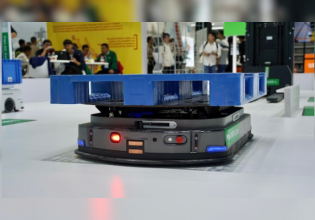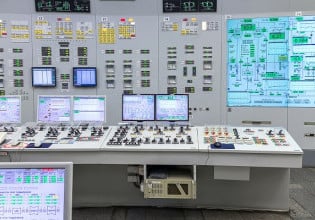ATX West 2023 Technology Highlight: PLCs with Additional Capabilities
PLCs need no trade show to announce their presence. But many companies have developed improvements to the traditional platform that can present new opportunities for the future of operational technology.
The PLC has existed since the first time a computer was used to control an industrial process. Even though it is one of the oldest digital control architectures, many PLCs have not changed over the decades beyond a greater capacity to store and access data and the communication protocols that allow it to interface with the entire process. At the core, it has always been a receiver of inputs, a calculator of algorithms, and a producer of output signals.
Recently, many industry leaders have begun the slow process of creating a new industrial paradigm to keep up with the rapid pace of technology. However, the nature of industrial processes, with equipment that must be continuously running and operators carrying decades of experience, keep the changes slow. Slow, at least compared to the consumer electronic market.

Considering current industry needs, the PLC is lacking required functionality. Image used courtesy of Adobe Stock
Is There Something Wrong With Standard PLCs?
If something is undergoing a change, then the natural question is posed: Was something wrong with how it operated before?
Considering the needs of industry to have the ability to access data globally and securely, then yes, the PLC is lacking the required functionality.
If a process is meant to operate behind closed doors, running a small set of machines with no desire to interface with the outside world, nor share data on any accessible network, then the traditional PLC will be a great fit.
But many companies are moving beyond this standard. Progress means complexity and increased risks. If the process is intended to share data with the outside world (the internet), then cybersecurity becomes more important. If the system can send data to the web, can it receive instructions safely? Can it interface with a company's WMS or ERP system? What if the software is a proprietary custom system?
To address all of these questions, many historically reliable PLCs would require another 3rd party computer networked to the PLC to handle all of these seemingly "IT-related" tasks.
Or…the PLC can be designed to operate just like the PLC it was before but with this extra ability included.
This concept has been known for some time but has become increasingly common: the industrial PC (IPC).

Bosch Rexroth’s ctrlX Automation platform at ATX West 2023.
Bosch Rexroth ctrlX Automation
Bosch Rexroth’s ctrlX Automation platform is centered around hardware that places a PLC processor on a board alongside an entire system on a chip that runs an operating system. This operating system is the underlying commonality of the IPC architecture. The operating system allows the installation (and even development) of applications, more like a computer desktop. These apps will likely include the PLC software, an IIoT gateway service, and quite probably a data display dashboard for quickly referencing process stats.
Since the ctrlX platform is not just the processor, it also includes remote I/O modules since the system still needs to connect to the machines and motor and motion controllers and drives. HMIs connected to this system will not only show data but can show the computer interface, just like the monitor of a computer.

Beckhoff’s CX Embedded PCs at ATX West 2023.
Beckhoff’s CX Series of Embedded PCs
Remotely accessing I/O from a hub on the machine is increasingly common, so most IPCs are available as just hardened computers with network ports to connect with remote I/O racks. However, in many other cases, like this CX series from Beckhoff, the operating system is in a form factor with local and remote I/O options. This would be more recognizable to an electrician as a PLC but often with a few more USB and display ports than normal.
The operating system running on the Beckhoff CX series is an embedded version of Windows, capable of running many common programs and applications, including TwinCAT 3. Regarding security, a top consideration for networked computers, a Windows environment allows developers to create security software and updates on a more reliable computer system.
B&R Industrial Automation’s panel PCs place the IPC and HMI in the same package. Image used courtesy B&R Industrial Automation
B&R Industrial Automation IPCs
The industrial PCs product line from B&R Industrial Automation illustrates a variety of models that can be configured for various situations. Certainly, the typical industrial case with the DIN rail mount is appropriate for cabinet enclosures. Alternative options are the panel PC, which places the IPC and HMI into the same package, saving space and network resources. Finally, a more ruggedized mobile application has found use in harsh outdoor equipment applications.
The architecture of the B&R industrial PCs allows the use of multiple operating systems, including Windows, Linux, and B&R's own Automation Runtime. Many preconfigured packages can be built with installed and pre-licensed software as the customer needs.
Why Use Industrial PCs (IPCs)?
To make the answer overly simple (it's never this simple…), your processor must still interact with and control the plant floor equipment. It must also process and exchange data with local, edge, or cloud services. That entire system would be accomplished one of two ways.
First, a traditional PLC could be networked with other applicable computers to accomplish each task, each with a heavy lift from the company's IT/OT department, security, and maintenance performed by the in-house team that built the system.
Alternatively, the IPC can handle the plan floor I/O tasks, process data like a computer, and communicate directly with remote services to manage data sharing in a secure environment, supported by a large company that can constantly improve.







